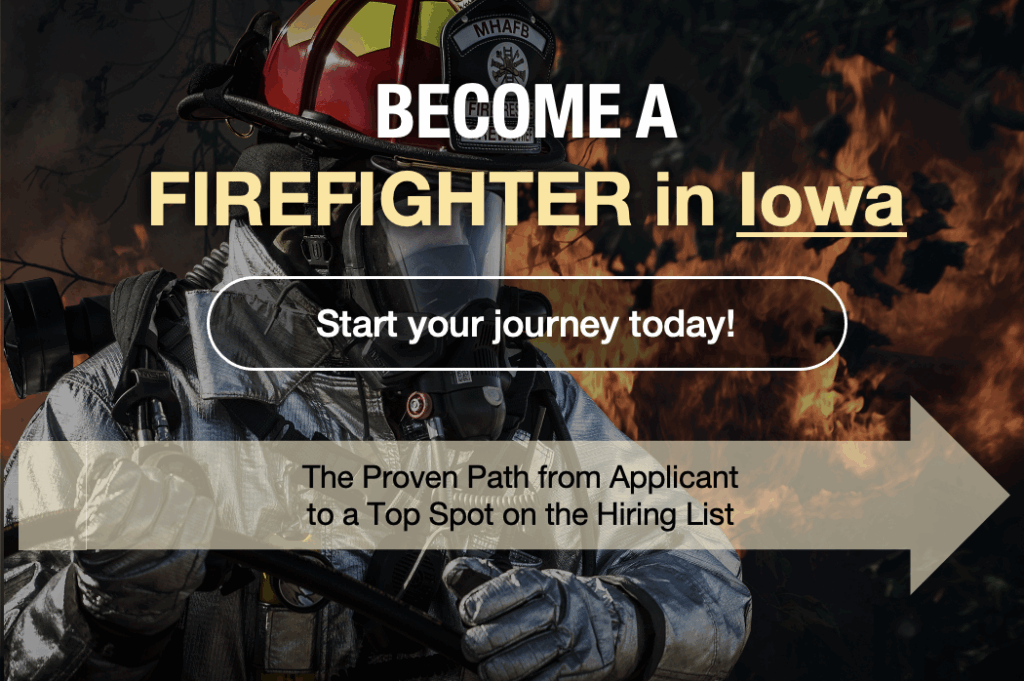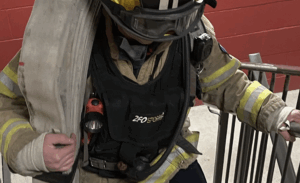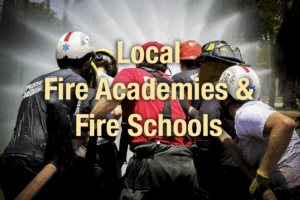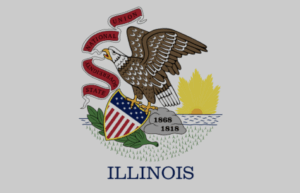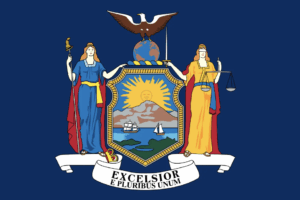If you’re wondering how to become a firefighter in Iowa, you’re not alone.
Becoming a firefighter in Iowa is a competitive and rewarding pursuit that requires preparation, commitment, and a strong desire to serve your community.
Whether you’re interested in volunteering in a rural department or joining a career department in a major city like Des Moines or Cedar Rapids, this guide walks you through everything you need to know to get started in the fire service in Iowa.
General Steps to Become a Firefighter in Iowa
Fire departments across Iowa may vary slightly in their requirements, but most full-time positions require the following:
- Must be at least 18 years old
- High school diploma or GED
- Valid Iowa driver’s license
- U.S. citizenship or legal authorization to work in the U.S.
- No felony convictions
- Good moral character
- Pass a physical fitness exam, background check, and medical screening
Some departments, especially larger cities, may require EMT or paramedic certification and Firefighter I & II certification prior to applying.
Steps to Become a Firefighter in Iowa
Graduate High School or Earn a GED
This is the foundational requirement. While a high school diploma is enough to get started, many candidates improve their chances by taking courses in fire science or emergency medical services.
Get EMT Certification
Most Iowa fire departments require candidates to be certified EMTs, and many prefer paramedics. You can complete your training at:
Earn Firefighter I and II Certification
Iowa follows NFPA 1001 standards, and you can earn your certifications through:
- Iowa Fire Service Training Bureau
- Regional training centers
- Local fire academies (some departments offer in-house training)
Prepare for and Pass the CPAT
The Candidate Physical Ability Test (CPAT) is widely used in Iowa. It includes real-life firefighting simulations like ladder raises, hose drags, stair climbs, and victim rescues. Practice well in advance.
Take the Written Exam
This aptitude-based test covers reading comprehension, memory, spatial awareness, math, and situational judgment. Use quality study materials—like Mastering the Firefighter Exam—to score your best.
Apply to Fire Departments Across Iowa
Watch for open positions on city websites, fire department pages, or state career portals. Prepare to submit certifications, transcripts, and personal background information.
Oral Interview and Background Check
If you pass the physical and written portions, you’ll face an oral board interview. You’ll also go through a comprehensive background check, psychological evaluation, and medical screening.
Attend a Fire Academy (If Required)
Some departments require recruits to complete their own academy after hiring. Others require Firefighter I & II certification before applying.
Firefighter Training in Iowa
The Iowa Fire Service Training Bureau is the lead agency for training and certification. They offer:
- NFPA 1001 Firefighter I and II certification
- Hazardous Materials Awareness and Operations
- Instructor and Officer level courses
Volunteer Firefighting in Iowa
Over 80% of Iowa’s fire departments are volunteer-based or combination departments. If you’re just starting out, volunteering is a great way to gain experience, build connections, and train for free.
Check with your local fire department or the Iowa Firefighters Association to find opportunities.
Why Scoring High on the Firefighter Exam in Iowa is Crucial
No matter where you apply in Iowa, passing the firefighter exam is crucial. Here’s why:
Your success on the firefighter exam plays a pivotal role in your career prospects.
Each department uses the results of the entrance exam to create a ranked list of candidates, and departments typically hire directly from this list. Here’s what to expect:
- Written Exam: The higher your score, the better your chances of ranking at the top.
- Physical Ability Test (PAT or CPAT): The physical test is a rigorous part of the process. Scoring well ensures you demonstrate the physical stamina and skills needed for the job.
- Oral Interview: This is your chance to stand out as a candidate who’s not only physically qualified but also emotionally and mentally prepared for the demands of firefighting.
The higher your score, the better your chances of getting hired.
How to Get Hired by Major Fire Departments in Iowa
Des Moines Fire Department (DMFD)
- Application Timeline: Every 1–2 years; sign up for alerts via the City of Des Moines website.
- Minimum Certifications: EMT required at time of application; Firefighter I & II preferred.
- Testing Process: Includes written exam, CPAT, structured oral interview, background screening, medical and psychological evaluation.
- Training: Paid academy covering fire suppression, EMS, hazardous materials, and rescue techniques.
Cedar Rapids Fire Department (CRFD)
- Recruitment Cycle: Based on department needs; applications open through the City of Cedar Rapids HR portal.
- Certifications: EMT required; paramedic preferred. Firefighter I & II required or obtained during the academy.
- Hiring Process: Written aptitude test, physical ability test, interview panel, polygraph, and background check.
- Fire Academy: New hires attend the CRFD Fire Academy with hands-on and classroom instruction.
Davenport Fire Department
- Application Process: Typically accepts applications annually or biennially.
- Requirements: EMT required; Firefighter I & II preferred. CPAT required.
- Selection Steps: Written test, physical test, interview, background check, and medical evaluation.
- Training: Recruits complete department-run fire academy and must meet Iowa certification standards.
It’s important to regularly check these websites for the most current information on application deadlines, eligibility requirements, and recruitment events.
Additionally, subscribing to interest lists or newsletters, can provide timely updates on upcoming opportunities.
Firefighter Salary in Iowa
According to the U.S. Bureau of Labor Statistics (2024 data):
- Average annual salary: $51,200
- Higher pay in cities like: Des Moines, Cedar Rapids, and Davenport
- Firefighters with paramedic certification often earn higher wages and have more promotion opportunities.
Tips to Stand Out as a Firefighter Candidate in Iowa
To gain a competitive edge:
- Get your EMT certification early, and go for paramedic if possible.
- Volunteer with a local department to gain hands-on experience.
- Stay physically fit and train regularly for the CPAT.
- Study smart with trusted guides like Mastering the Firefighter Exam.
- Attend local fire training programs or pursue a fire science degree.
Final Thoughts: How to Become a Firefighter in Iowa
Becoming a firefighter in Iowa requires dedication, preparation, and a passion for service. Whether you’re aiming for a position in Des Moines, Cedar Rapids, or your hometown volunteer department, following these steps will give you a strong foundation.
The sooner you start preparing—physically and mentally—the sooner you’ll be ready to succeed in the fire service.
Start your journey today!
Prepare for the firefighter exam with the book Mastering the Firefighter Exam: The Proven Path from Applicant to Top Spot on the Hiring List. Plus, find testing opportunities at firefighter-test.com, our trusted affiliate partner.


